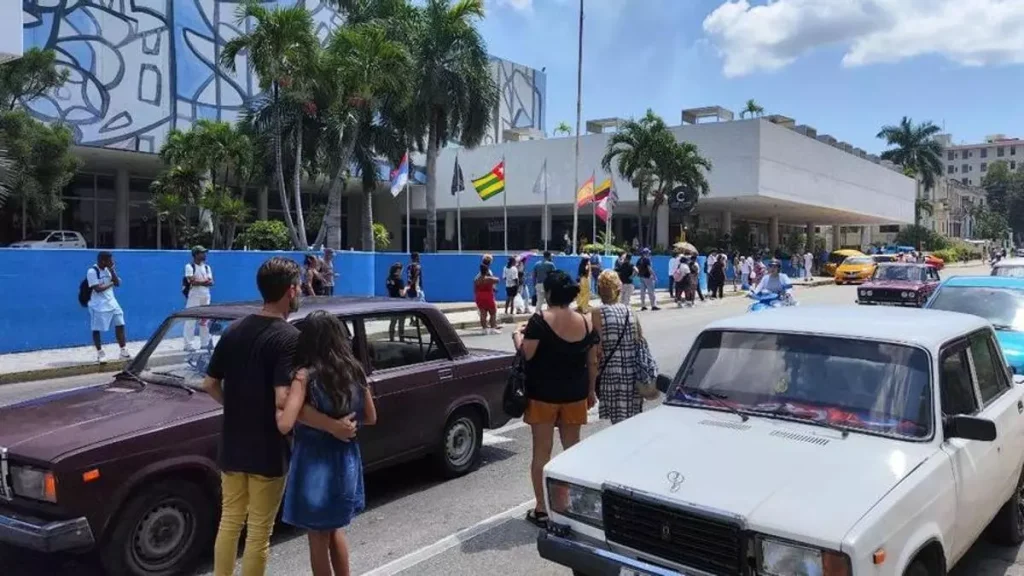Luis Raúl González-Pardo was in command of one of the MiG 29s but did not fire

![]() 14ymedio, Havana, 17 September 2024 — “Everything, or most of what has been said, is false,” were the last – and almost only – words to a media outlet, Martí Noticias, from the former pilot of the Cuban Armed Forces Luis Raúl González-Pardo, who has been living in the United States since last April thanks to the US Humanitarian Parole program. Afterwards, he hung up the phone on journalist Mario Pentón and deleted his number from WhatsApp.
14ymedio, Havana, 17 September 2024 — “Everything, or most of what has been said, is false,” were the last – and almost only – words to a media outlet, Martí Noticias, from the former pilot of the Cuban Armed Forces Luis Raúl González-Pardo, who has been living in the United States since last April thanks to the US Humanitarian Parole program. Afterwards, he hung up the phone on journalist Mario Pentón and deleted his number from WhatsApp.
González-Pardo was involved in one of the darkest episodes of the Cuban regime: the shooting down, in 1996, of two small planes belonging to Brothers to the Rescue, a humanitarian organization of exiles. He also held civil positions, such as the direction of Terminal 2 of the José Martí International Airport, and his wife still lives on the Island, waiting for a visa to join him.
“Right now I have a very difficult situation,” the former pilot told Pentón on Monday. “I haven’t decided yet what I’m going to do, or if I’m going to give interviews or not, mainly because of some additional situations that I have that could affect me.”
The journalist also shared on Tuesday an internal document from the US State Department, obtained by Martí Noticias and dated 2016, in which González-Pardo requested that his visa be expedited because he is a “facilitator” of high-level trips and a “key diplomatic contact” when it comes to organizing exchanges between the two countries. His visit – to continue reading
González-Pardo’s case is one of the most recent in a wave of high-ranking officials and members of the regime’s security forces who have ended up in Miami to live out their “retirement.” Photos of him wearing the uniform of the Armed Forces alongside several fighter pilots have circulated alongside the complaint in independent media.
According to several sources, González-Pardo was the man who was at the controls of the Mig 29 that pursued José Basulto – the leader of Brothers to the Rescue – to the north of the 24th parallel, in the Straits of Florida. Basulto himself confirmed this information to the military pilot Orestes Lorenzo, who escaped to the US in 1991 and returned to Cuba, despite the risks, to collect his family.
“I haven’t decided yet what I’m going to do, or if I’m going to give interviews or not, mainly because of some additional situations that I have that could affect me.”
Lorenzo, a friend of González-Pardo, was not aware of his involvement in the events of 1996. In 2017, he asked the US authorities to extend the validity of his visa to attend a meeting of former Cuban military personnel and a trip to the Disney parks, Universal Studios and Kennedy Space Center Museum, in Florida.
Aboard two Cessna planes belonging to Brothers to the Rescue, exiles Carlos Costa, Mario Manuel de la Peña, Armando Alejandre and Pablo Morales died on February 24, 1996, the day González-Pardo and the rest of the squadron hunted them down.
After it became known that Washington had approved the visit of the former pilot, a barrage of criticism and questioning from Cuban exiles has fallen on the US authorities. The emigrants have pointed out that, although he did not shoot at the planes, he pursued them while armed, knowing that those he harassed could not defend themselves.
One of the key factors in the success of that persecution was the information passed to Havana by Gerardo Hernández Nordelo, one of a group of five other spies, who are now considered “heroes” of the regime and hold several important positions.
In the case of Hernández – current coordinator of the Committees for the Defense of the Revolution – he was one of the leaders of the so-called Wasp Network of Cuban counterintelligence in Florida. The members of this group were arrested in 1998 and only five returned to the Island, thanks to a prisoner exchange during the Barack Obama Administration.
The Brothers to the Rescue tragedy became a topic of interest again at the end of last year, after Netflix produced, in 2019, a film about the Wasp Network and offered a manipulated version of the events. Basulto then sued Netflix for defamation and reached an agreement whose terms were not revealed. According to the exile, the film made concessions to the regime – which allowed scenes to be filmed in Cuba – and romanticized Fidel Castro’s crimes.
____________
COLLABORATE WITH OUR WORK: The 14ymedio team is committed to practicing serious journalism that reflects Cuba’s reality in all its depth. Thank you for joining us on this long journey. We invite you to continue supporting us by becoming a member of 14ymedio now. Together we can continue transforming journalism in Cuba.























